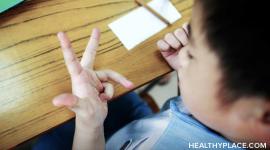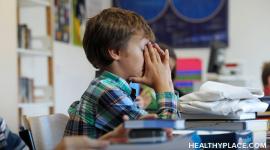What Is a Nonverbal Learning Disorder or Disability?

A nonverbal learning disorder (NLD) isn’t an official diagnosis. It’s a neurological condition that affects certain academic skills and causes social problems. Children with NLD can be highly skilled, even gifted, in non-affected academic areas. It’s estimated that about one percent of children, both boys and girls equally, have nonverbal learning disorder.
Researchers aren’t quite sure what causes nonverbal learning disorder, but they do link the root of the disorder to the brain. Different theories suggest that the problem is in the right hemisphere of the brain, the frontal lobe, or the corpus collosum, the structure allowing communication between hemispheres.
What is Nonverbal Learning Disorder? NLD Summary
Nonverbal learning disability impacts kids academically, visually, and socially. Kids with NLD struggle to understand concepts and identify patterns. A big part of this learning disorder is its social difficulties. It’s been compared to autism spectrum disorder because of some similarities in social behavior and interactions.
While NLD does cause academic struggles, there are some areas where a child with this disorder excels. Kids typically have large vocabularies and strong language skills. They tend to be talkative. They also have excellent memories. Another strength is their attention to detail.
If you’re concerned about your child and nonverbal learning disorder, knowing the prominent symptoms can help you recognize your child’s struggles.
Nonverbal Learning Disorder Symptoms
Nonverbal learning disability has many distinct symptoms that can fit into five general areas of weakness it causes: visual and spatial awareness, higher-order comprehension, social communication, math concepts, and executive functioning.
Specific symptoms of NLD include:
- Perceiving and evaluating visual input
- Difficulty comprehending, identifying the main ideas, concepts, and themes of what is read
- An inability to listen or read and take notes
- Poor gross motor skills
- Poor fine motor skills
- Awkwardness
- Extreme difficulty with change and transitions
- Fearful of new situations
- Lack of common sense
- Concrete, literal thinking, and an inability to consider other viewpoints
- Inability to look beyond little details to see a bigger picture
- Poor abstract reasoning skills
- Problems with understanding nonverbal communication like body language, tone of voice, and facial expressions
Another characteristic of nonverbal learning disorder is poor social skills. Social deficits are just as problematic as other characteristics of the disorder.
Nonverbal Learning Disorder and Social Skills
One of the biggest problems for kids with NLD is inadequate social skills. One difficulty these kids have is talking too much and not understanding how to take turns in a conversation. This is largely due to their strong verbal skills and inability to read cues. Because of their visual and spatial relations difficulties, a child with NLD can’t pick up on signals by observing and making connections.
These kids also have a hard time with personal space and often stand too close to others. Another problem is their concrete thinking that causes them to take everything literally, including joking and sarcasm. They can become angry or hurt and either lash out or withdraw.
Thankfully, there are some things that can help children with NLD.
Nonverbal Learning Disability Treatment
There isn’t a recommended treatment for nonverbal learning disorder. There isn’t enough information known about this disorder to know how to treat it. Despite a lack of formal treatment recommendations, there are interventions that have been found to help kids. Nonverbal learning disorder treatment involves parental support and guidance as well as therapy.
Mental health therapy can help kids with generalized anxiety and social anxiety that are part of this disorder. Play therapy and cognitive-behavior therapy (CBT) are approaches that can help kids with NLD. Social skills groups at school, or conducted by the child’s play therapist or CBT therapist, allow kids to practice skills and receive direct feedback. Occupational therapy is another approach that is practical and builds skills. Kids develop fine and gross motor skills, and they learn valuable life skills as well.
Parents can do many things to help their child increase skills. These suggestions can get you started:
- Work with your child on problem-solving by walking them through a step-by-step approach
- Help them organize school projects and assignments and determine how to dive in
- To make transitions easier, be logical and straightforward and make sure they understand when they’ll have to shift gears
- Keep your home calm to avoid sensory overload
- Create and keep routines
- When interacting with your child, be clear, specific, and concrete
- Avoid playful teasing and nicknames (kids with NLD don’t understand nicknames)
- Arrange playdates at your house, and have them structured
- For playdates, choose kids that have things in common with your child (your child’s teacher may have insights)
Understanding the symptoms of nonverbal learning disorder and identifying what your child especially struggles with will help you better relate to them as well as help them understand what their brain prevents them from grasping. With support, patience, and practice, kids with nonverbal learning disorder can acquire life skills.
See Also:
APA Reference
Peterson, T.
(2022, January 17). What Is a Nonverbal Learning Disorder or Disability?, HealthyPlace. Retrieved
on 2026, January 6 from https://www.healthyplace.com/parenting/learning-disabilities/what-is-a-nonverbal-learning-disorder-or-disability



